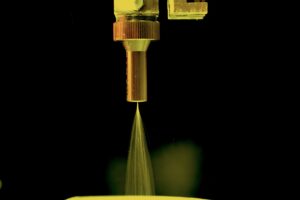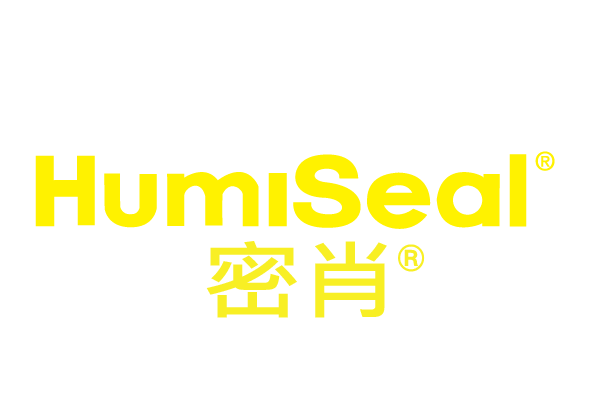What are Conformal Coatings? All your frequently asked questions answered.
The rising popularity of conformal coatings extends beyond traditional applications, particularly in densely packaged portable electronic devices vulnerable to environmental-induced failures. However, navigating the selection of appropriate coating materials and application processes can pose challenges and consume significant time, especially for those unfamiliar with the subject. Lack of comprehensive understanding and adherence to relevant standards and specifications can result in costly and irreversible errors.
We created this page to answer all your conformal coating questions providing a foundational overview and hopes to remain an invaluable resource on conformal coatings.
Content Index:
- What is a Conformal Coating?
- What are the Different Types of Conformal Coatings?
- What Are the Advantages of Using a Conformal Coating?
- How to Apply Conformal Coatings?
- Is Conformal Coating the Same As Waterproofing?
- Is Conformal Coating Conductive When Wet?
- Methods of Application
- Methods of Drying and/or Curing Conformal Coatings?
- Glossary (Terms & Definitions)
1.What is a Conformal Coating?
 Conformal coating is a protective coating or polymer film 25-75µm thick (50µm typical) that ‘conforms’ to the circuit board topology. Its purpose is to protect electronic circuits from harsh environments that may contain high humidity, a range of airborne contaminants and varying temperatures. By being electrically insulating, it maintains long-term surface insulation resistance (SIR) levels and thus ensures the operational integrity of the assembly. It also provides a barrier to air-borne contaminants from the operating environment, such as salt-spray, thus preventing corrosion.
Conformal coating is a protective coating or polymer film 25-75µm thick (50µm typical) that ‘conforms’ to the circuit board topology. Its purpose is to protect electronic circuits from harsh environments that may contain high humidity, a range of airborne contaminants and varying temperatures. By being electrically insulating, it maintains long-term surface insulation resistance (SIR) levels and thus ensures the operational integrity of the assembly. It also provides a barrier to air-borne contaminants from the operating environment, such as salt-spray, thus preventing corrosion.
Conformal coatings are a breathable protective layer that will protect against the environment the PCA is exposed to by filtering out the airborne contaminants and maintaining long-term surface insulation resistance but will also allow any moisture trapped in the circuit board to escape.
The concept of a conformal coating of electronics was originally proposed and developed through research to meet the demanding requirements of the military decades earlier. HumiSeal was a part of that early research and has remained a pioneer and leader for over 60 years as the technology has expanded to an array of industries today including:
- Aerospace
- Automotive, including Hybrid and EV
- Industrial Controls
- White Goods
- Telecoms
- Energy both Traditional and Renewable
2.What are the Different Types of Conformal Coatings?

Conformal coatings come in a wide range of forms. From a physical standpoint, conformal coatings are commonly dispersed in organic solvents (solvent-based) or supplied in high or 100% solids (silicones and most UV curables).
From a chemical standpoint, conformal coatings’ standard chemistries include:
Acrylic conformal coatings are perhaps the most popular of all conformal coating materials as they are easy to apply and remove, with a wide process window for use. Acrylic coatings dry rapidly, are fungus resistant and provide long pot life. Additionally, acrylic materials produce little or no heat during the curing process, eliminating potential damage to heat sensitive components. The coatings possess low shrinkage, provide significant humidity resistance and exhibit low glass transition temperatures.
Polyurethane coatings are available in either single or two-component formulations. Both options provide excellent humidity resistance and far greater chemical resistance than acrylic coatings. Single component polyurethanes, while easy-to-apply and enjoy long pot life, sometimes require long curing regiments to achieve a full or optimum cure. In some instances, the cure cycle can be accelerated with the application of heat. Two-component formulations can reach optimum cure properties in as little as one to three hours with the assistance of heat.
Silicone conformal coatings are most widely used in high-temperature environments due to their innate ability to withstand prolonged exposure to higher temperatures than most other conformal coating chemistries. This attribute has made them the primary choice for under hood automotive applications. They are also capable of being applied in thicker films making them useful as a vibration dampening/isolation tool if the coated assembly is to be placed in a high vibration environment.
HumiSeal’s Synthetic Rubber products are unique formulations that may enable the user to achieve specific protection / environmental goals not offered by “traditional” coatings. Synthetic Rubber materials are characterized by extremely low glass transition temperatures, resulting in stable modulus over a wide temperature range and extreme flexibility. Synthetic Rubbers have the least moisture permeability of all resins currently available. These products do not necessarily represent our complete Synthetic Rubber range.
UV curable acrylated urethanes.
HumiSeal’s UV curable conformal coatings represent an exciting innovation that provides superior performance. When combined with extremely fast curing, allows for short cycle times and maximum production speeds. These products can be sprayed using traditional automated spray equipment with the relatively simple addition of a small-footprint UV light curing unit.
Each chemistry is associated with certain physical properties that are suited for certain conditions and end-uses. For example, silicones tend to have the highest temperature resistance while synthetic rubbers and UV curables often provide the highest level of humidity resistance.
3- What Are the Advantages of Using a Conformal Coatings?
The advantages of conformal coatings can be summarized as follows:
- Insulating property allow a reduction in PCB conductor spacing of over 80%
- Can help eliminate the need for complex, sophisticated enclosures
- Light weight
- Completely protect the assembly against chemical and corrosive attack
- Eliminate potential performance degradation due to environmental hazards
- Minimize environmental stress on a PCB assembly
- Inherent flexibility conforms to varied component profiles
Ideally, conformal coatings should exhibit the following characteristics:
- Simple application
- Easy removal, repair and replacement
- High flexibility
- Protection against thermal and mechanical shock
- Protection against environmental hazards
4-How to Apply Conformal Coatings?
How a conformal coating is applied is dependent mainly upon:
- Preferred application method
- Existing Available Equipment (Dip/Spray equipment, curing equipment etc.)
- Board Design/Complexity/Masking Needs
- Desired volumes/cycle times.
5-Is Conformal Coating the Same as Waterproofing?
A conformal coating provides resistance to humidity and moisture, but it is not the impermeable barrier one expects with the term waterproof. In fact, Conformal coatings are required to be somewhat permeable to allow entrapped contaminants or outgassing from electronics to escape safely and without damage.
6-Is Conformal Coating Conductive When Wet?
A conformal coating is designed with a relatively high resistance to conduction of electricity. This dielectric performance is relatively unaffected by the presence of liquids (such as water) on the surface of the coating. However, the liquid itself will remain conductive on the surface, and prolonged exposure to standing liquids will eventually degrade the dielectric properties of a conformal coating to some degree due to absorption over time within the coating as well as chemical degradation.
7-Methods of Conformal Coating Application: (In order of sophistication)
| Advantages | Disadvantages | |
| Brush on |
|
|
| Dip coat |
|
|
| Hand Spray |
|
|
| Selective automated spray |
|
|
8- Methods of Drying and/or Curing Conformal Coatings?
With all four application methods noted above, it will also be necessary to dry and in some cases cure or crosslink the applied coating. Not all methods will be applicable or possible for all chemistries, for example UV curing coatings can only be cured with UV curing equipment.
| Advantages | Disadvantages | |
| Air Dry |
|
|
| Oven dry (batch or contiuous) |
|
|
| UV light cure |
|
|
9- Conformal Coatings Glossary (terms & definitions)
Adhesion promotion
Either a chemical process of preparing a surface to enhance its ability for a coating to adhere to it (eg. Plasma) or an
internal modification to the conformal coating material to help ensure it adheres to the intended, or difficult to adhere to
substrate.
Adhesion failure
The rupture of an adhesive bond such that the separation appears to be at the adhesive-adherent interface.
AR/UR
Abbreviation standing for acrylic resin and urethane resin combination chemistries.
Bridging
Fillet or meniscus formation of coating around the leads of a component caused by capillary action.
Creep
Strain, deformation, or movement of coatings caused by time and/or temperature.
Cross-linking
The formation of chemical bonds between molecules in a thermosetting resin during a polymerization reaction.
CTE
Coefficient of Thermal Expansion – linear dimensional change with respect to an original dimension due to a change in
temperature. Generally, the greater the value, the more mismatch there is between the coating and substrate during
thermal excursions, which can result in stress-cracking.
Cure
A change in the physical properties of a polymer by a chemical reaction.
Degradation
Decrease in quality or integrity. Loss of desired physical, chemical or electrical properties.
Delamination
A separation between a conformal coating layer and the surface it is adhering to.
De-wetting
The propensity of the coating material to refuse to wet the surface evenly. This phenomenon is generally a sign of
localized contamination, or that the surface energy of the substrate was too low to start with.
Dielectric constant
The ratio of the capacitance of a configuration of electrodes with a specific material as the dielectric between them to the
capacitance of the same electrode configuration with a vacuum or air as the dielectric.
Dielectric strength
The maximum voltage that a dielectric can withstand under specified conditions without resulting in a voltage breakdown,
usually expressed as volts per unit dimension.
Dilution
Reduction in viscosity. Can be achieved by mixing a non-reacting, soluble agent (solvent) into the material.
Dissipation factor
A value that represents the tendency of insulating or dielectric materials to absorb some of the energy in an alternating-current signal.
Durometer
A measure of the degree of hardness or the resistance to be deformed or fractured.
Filler
A substance that is added to a material to modify its solidity, bulk, or other properties.
Fish eyes
A surface defect to the conformal coating that resembles the eyes of a fish, usually resulting from localized surface contamination.
Gel time
Time taken for a liquid polymer to begin to exhibit pseudo-elastic properties or to be immobilized.
Glass transition temperature Tg
The temperature at which an amorphous polymer, or the amorphous regions in a partially-crystalline polymer, changes from behaving more
like a glass to more like a rubber.
Hardness
A property that indicates the ability of a material to resist penetration of a specific type of indentor when forced into the material under
specified conditions. Indentation hardness is inversely related to the penetration and is dependent on the elastic modulus and viscoelastic
behavior of the material.
Insulation resistance
A measure of the capability of a material to electrically insulate adjacent conductors from each other. Moisture Insulation Resistance (MIR) is
the same measure made under hot and humid conditions, usually 65ºC/95%RH.
Masking
The process of applying a temporary film, tape boot or plug that prevents the area covered from being coated.
Monomer
A chemical compound that can undergo polymerization.
MSDS
(Material Safety Data Sheet) Provided by the manufacturer, contains relevant properties of the material with regards to safety concerns.
Multi-layering
The process of applying more than one layer of coating to make up the desired thickness.
Orange peeling
Surface defects in the conformal coating that resembles the surface or skin of an orange. Orange peeling is generally caused by a
combination of excessive drying speed resulting in wetting issues.
Outgassing
The gaseous emission from a processed coating layer when it is exposed to heat or reduced air pressure, or both.
Permeability
The ability of molecules of one material to flow through the matrix of another material. The degree of permeability is dependant on the
molecular structure of both materials.
Polymerization
The formation of a matrix of cross-linked long chain molecular structure from short chain monomer molecules.
Pot life
The length of time a material, substance, or product can be left in an open package or dispenser, while it meets all
applicable specification requirements and remains suitable for its intended use.
Rework
The act of reprocessing non-complying articles, through the use of original or alternate equivalent processing, in a manner
that assures compliance of the article with applicable drawings or specifications.
RTV
(Room Temperature Vulcanizing) The development of desired dry film properties at room temperature..
Shelf life
The length of time a material, substance, or product can be stored, under specific environmental conditions, while it
meets all applicable specification requirements and remains suitable for its intended use.
Shrinkage
Reduction in volume as a wet, freshly applied layer dries/cures into a coating film with desired properties.
Solids content
The ratio of the resin or polymer material to the solvent carrier. The percentage of material converted to solid coating
during curing.
Stripping
The process of eroding a material by chemical reaction. Stripping agents can be used to remove certain types of
conformal coating for the purpose of rework or repair.
Surface tension
The natural, inward, molecular-attraction force that inhibits the spread of a liquid at its interface with a solid material.
Viscosity
The property of a polymer to frictionally resist internal flow in the liquid state that is directly proportional to the applied
force. High viscosity materials generally resist flowing and levelling.
VOC
(Volatile organic compound) Regulated compounds containing at least one carbon atom and having a measurable vapor
pressure.
Wetting
The formation of a relatively uniform, and adherent film of materials on a surface. Surface tension of the applied material
must be lower than the surface energy of the substrate to enable this. Inability of a coating to wet a substrate is usually
indicative of surface contamination or an inherently low surface energy substrate (eg Teflon).
